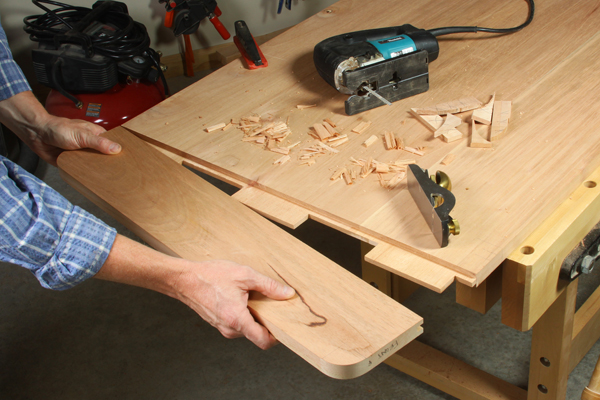
How do you handle the cross-grain when you make breadboard ends for a tabletop? – Dave Long
Chris Marshall: The name of the game, when it comes to cross grain wood movement on breadboard ends, is to allow for it. Typically that means using mortise-and-tenon joinery instead of nails, screws or dowels. The breadboard ends receive the mortise, and the panel gets the tenons, usually with cross pins through the joint to hold it together. Make the mortise overly long, so the tenon can move inside the joint as the panel expands and contracts across its width. The wider the panel, the more “slip space” you should leave for the tenon. You could also use loose tenons or splines instead of making integral panel tenons, if you prefer. You’ll get the same end result, provided you allow some slip space in the joints. Because, one way or the other, that panel is going to expand and contract, but the breadboard ends won’t. I suggest you download a free wood movement calculator app for your phone or tablet so you can determine how much wood movement to allow for, based on the panel width, relative humidity range and the wood species you are using. There are several available. I use an inexpensive one called “the woodshop widget,” which also can help you estimate board footage. It’s super handy!
Tim Inman: Accommodate the directional movement of the wood. If you don’t, the breadboard will either warp or split. A careful joinery trick whereby by ends appear to be glued on but actually aren’t is the best way to go. Usually two pins can be hidden on the underneath side to attach the end boards. They fit tightly into the end board, but the hole they go through in the breadboard part is oversized to allow wood to move.





